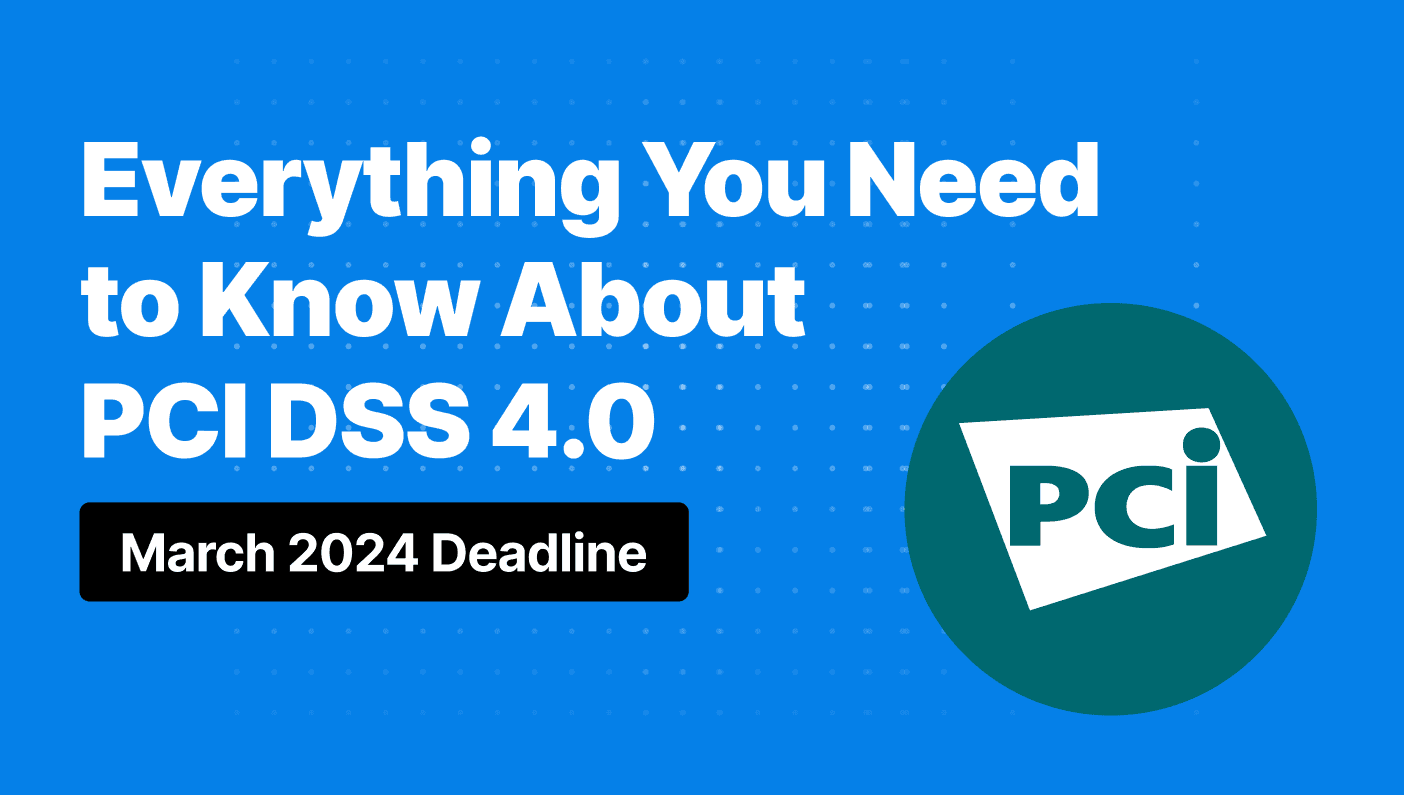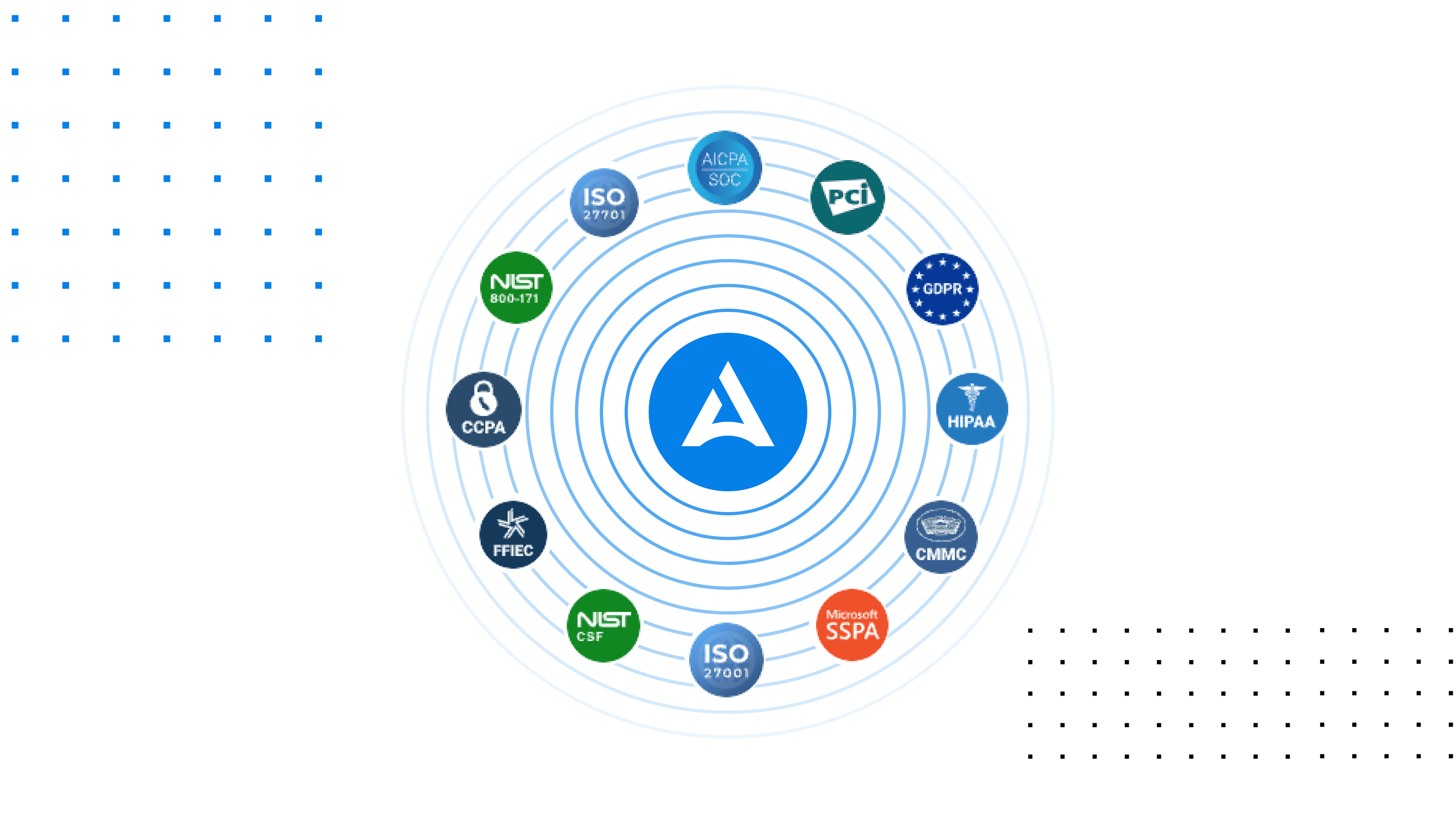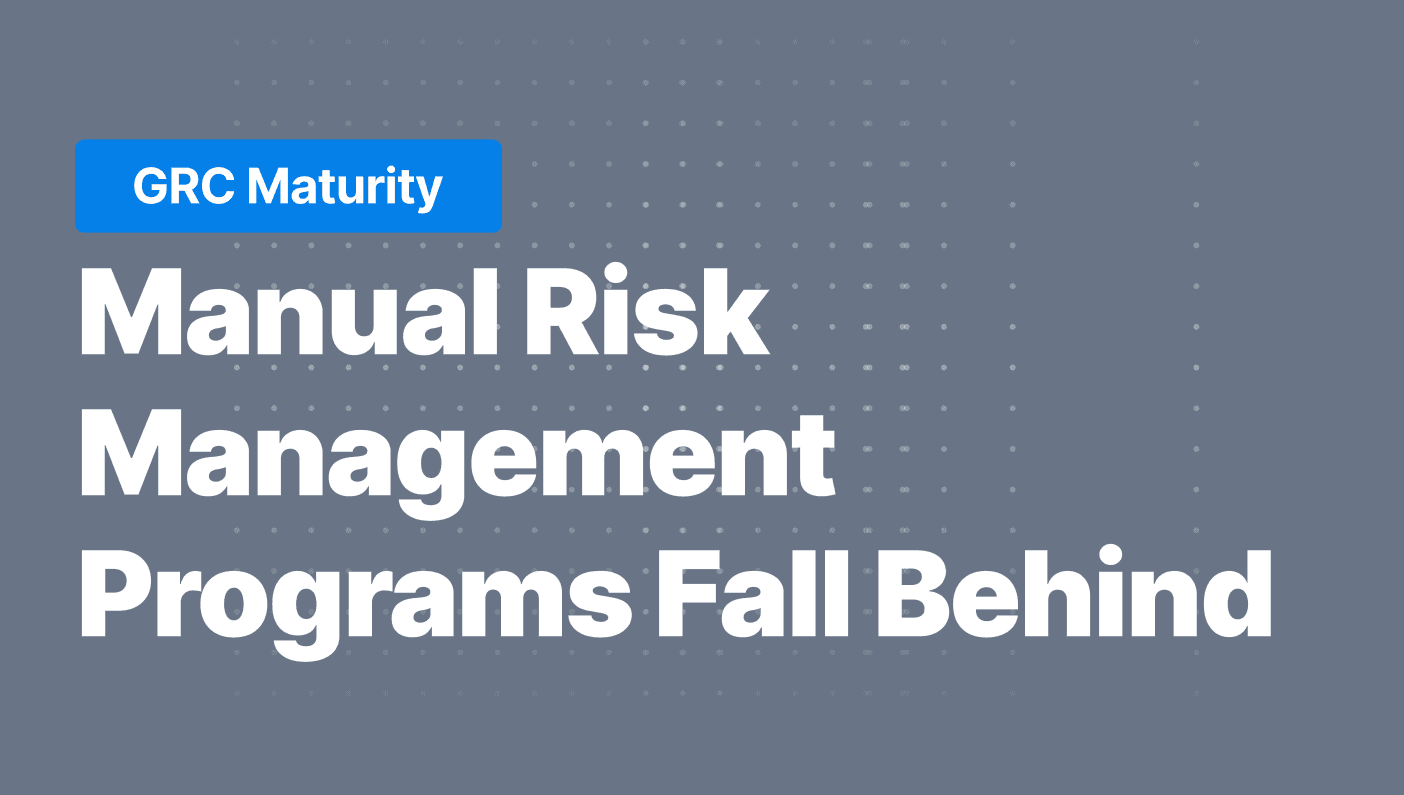Everything You Need to Know About the Shift From NIST CSF 1.1 to NIST CSF 2.0
NIST has launched CSF 2.0 to tackle new challenges, risks, and threats affecting everyone. This lengthy guide helps you navigate the move from NIST CSF 1.1 to 2.0, and highlights the importance of the new Govern Function.
Since 2014, companies of various types and sizes have started or refined their cybersecurity strategies using the NIST Cybersecurity Framework (CSF). Now, nearly a decade later, NIST has launched CSF 2.0 to tackle new challenges, risks, and threats affecting everyone. The framework's newest update mirrors the ever-changing nature of cyber risks, helping organizations stay informed about emerging threats, and adjust their cybersecurity strategies as needed.
Without burying the lede too deep in this particularly lengthy comparison, one of the most significant changes is the introduction of a new CSF Govern function; however, the primary purpose of the update is to improve the framework's adaptability and usability.
Have specific questions about NIST CSF 2.0? If you have ChatGPT Plus, you can use our new quickstart companion bot or the NIST CSF 2.0 framework guide bot for more detailed information.
For a bit of history, the NIST Cybersecurity Framework was first developed to standardize the management of cybersecurity risk across different sectors in an understandable and implementable manner. It provided and still provides a comprehensive guidelines that assist organizations in assessing and enhancing their capabilities to prevent, detect, and respond to cyber incidents. The framework aligns cybersecurity activities with business requirements, risk tolerances, and resources. This allows organizations to create a strong cybersecurity program tailored to their unique needs, thereby increasing resilience against attacks.
The Significance of Transitioning from CSF 1.1 to CSF 2.0
Transitioning from CSF 1.1 to CSF 2.0 marks a significant milestone in the evolution of cybersecurity best practices. This update is not merely an incremental change but a comprehensive overhaul that addresses the changing cyber threat landscape and incorporates feedback from a wide range of stakeholders. The move to CSF 2.0 underscores the importance of continuous improvement in cybersecurity measures, reflecting advances in technology, shifts in cyber threats, and emerging industry best practices.
CSF 2.0 introduces several major updates designed to streamline the framework's usability and enhance its effectiveness in addressing contemporary cybersecurity challenges. Among these updates are clearer language, refined categories and subcategories, and the integration of privacy considerations throughout the framework to address the growing importance of privacy in cybersecurity.
A particularly impactful and much-needed addition in CSF 2.0 is the introduction of a new function: Govern. This function represents a strategic expansion of the framework, emphasizing the importance of governance in cybersecurity. Governance is crucial for ensuring cybersecurity strategies align with business objectives and comply with relevant laws, regulations, and policies.
The Govern function aims to provide organizations with guidance on establishing and maintaining a governance structure that effectively supports their cybersecurity efforts, making it easier to integrate cybersecurity into their overall business strategy.
NIST CSF’s Goals and Its Impact on Cybersecurity Practices
The NIST Cybersecurity Framework (CSF) was first introduced in 2014 in response to a growing recognition of the cybersecurity threats facing critical infrastructure sectors. Developed by the National Institute of Standards and Technology (NIST) under a presidential executive order, the CSF was designed to provide a unified approach to managing cybersecurity risk.
Its primary goals were to help organizations understand, manage, and reduce their cybersecurity risks and to protect against cyber threats. Over the years, the CSF has profoundly impacted cybersecurity practices by offering a flexible and cost-effective guide to improving security and resilience. It has been widely adopted across various sectors within the United States and internationally, enhancing the cybersecurity posture of organizations and critical infrastructure. NIST CSF has also become the de facto entry for many startups seeking to build their initial cybersecurity strategy and program.
Overview of NIST CSF 2.0 – Key Components and Structure
CSF 2.0 represents a significant update to the original framework. The updated framework retains the core structure of its predecessor, organized around the primary functions of Identify, Protect, Detect, Respond, and Recover, but introduces a new function: Govern. This addition emphasizes the importance of governance in managing cybersecurity risks effectively.
The key components of CSF 2.0 include:
CSF Core: A set of cybersecurity activities and outcomes organized into Functions, Categories, and Subcategories, which provide a comprehensive taxonomy for managing cybersecurity risks.
Organizational Profiles: Customizable frameworks that allow organizations to map their cybersecurity activities and objectives to the CSF Core, facilitating a tailored approach to risk management.
Tiers: Levels that describe the degree of sophistication and rigor of an organization's cybersecurity risk management practices, helping organizations to align their cybersecurity activities with their risk management objectives.
Informative References: Guidance from existing standards, guidelines, and practices to achieve the outcomes defined in the CSF Core.
These components work together to provide a flexible and adaptive structure for managing cybersecurity risk tailored to individual organization's unique needs and objectives.
The Role of the NIST CSF in Enhancing Organizational Cybersecurity Posture
The NIST CSF is designed to help strengthen the cybersecurity posture of organizations by offering a proven and flexible framework for managing cyber risks. By adopting the CSF, organizations can achieve several critical objectives:
Improve Risk Management: The framework helps organizations identify, assess, and prioritize cybersecurity risks, enabling them to allocate resources more effectively and improve their overall risk management processes.
Enhance Resilience: Through the implementation of the CSF's core functions, organizations can develop robust capabilities to prevent, detect, respond to, and recover from cyber incidents, enhancing their resilience against cyber threats.
Facilitate Communication: The CSF provides a common language for internal and external communication about cybersecurity risks and practices, improving stakeholder understanding and collaboration.
Drive Continuous Improvement: The framework's flexible and adaptive structure encourages organizations to continuously assess and improve their cybersecurity practices, keeping pace with the evolving cyber threat landscape.
What's New in NIST CSF 2.0?
CSF 2.0 introduces several key updates and enhancements aimed at providing organizations with a more streamlined and effective approach to cybersecurity risk management. These updates are designed to make the framework even more accessible and practical for a broader range of organizations, including small and medium-sized businesses, which may not have the resources of larger corporations.
One of the most significant changes in CSF 2.0 is the introduction of the Govern function, which explicitly emphasizes governance and the strategic alignment of cybersecurity with organizational objectives. This new function emphasizes the importance of leadership commitment, policy development, and the integration of cybersecurity into overall risk management practices.
In addition to the new Govern function, CSF 2.0 has been refined to clarify and streamline its components. This includes updates to the language and structure of the framework to enhance usability and understanding. The changes aim to facilitate easier adoption and more effective implementation of the framework, especially for organizations new to CSF.
Moreover, CSF 2.0 extends its guidance to address emerging technologies and cybersecurity challenges. It provides updated informative references and implementation examples that reflect the latest best practices and standards. This ensures that organizations can access current information and adapt the framework to their unique contexts and technology environments.
Emphasizing Flexibility and Adaptability
One of the core principles of CSF 2.0 is its continued emphasis on flexibility and adaptability. The framework is designed to be scalable and customizable, allowing organizations of all sizes and sectors to apply it to best meet their specific needs and risk profiles. CSF 2.0 encourages organizations to take a proactive and iterative approach to cybersecurity, continuously assessing and improving their practices to keep pace with the evolving cyber threat landscape.
To support organizations transitioning from CSF 1.1 to CSF 2.0, NIST provides a range of resources, including quick-start guides, examples, and tools for assessing current cybersecurity practices against the updated framework.
Key Differences Between NIST CSF 1.1 and NIST CSF 2.0
This section highlights the core differences between CSF 1.1 and CSF 2.0 at a high level, clarifying the structural changes, additions, and updates and their broader implications for cybersecurity strategy and implementation.
Structural Evolution and Updates
CSF 1.1 was structured around five primary functions: Identify, Protect, Detect, Respond, and Recover. These functions provided a high-level, strategic view of the lifecycle of an organization's management of cybersecurity risk.
CSF 2.0 retains the original five functions and introduces a sixth, Govern, focusing on governance, strategy, and cybersecurity risk management policy. This addition emphasizes the significance of aligning cybersecurity activities with organizational objectives and risk management strategies. It also deliberately emphasizes the need for cybersecurity to be a board-level concern, integrating it into the broader enterprise risk management framework.
Removed Elements
CSF 1.1's implicit emphasis on governance and strategic alignment is now explicitly defined within the CSF 2.0 through the Govern function.
Updated Elements
Language and terminology across the framework have been updated in CSF 2.0 to clarify meanings, ensuring broader accessibility and understanding.
The categorization within the functions has been refined to better align with evolving cybersecurity practices and technologies.
Newly Introduced Elements
Beyond the Govern function, CSF 2.0 introduces updated informative references and implementation examples that reflect the latest best practices, standards, and technological advancements.
A more structured approach to cybersecurity risk communication and integration with enterprise risk management (ERM) strategies.
Impacts on Cybersecurity Strategy and Implementation
Both versions of CSF emphasize flexibility and adaptability to suit different organizational contexts. CSF 2.0 enhances this by offering more detailed guidance and examples. These reflect current cybersecurity challenges and solutions, assisting organizations in tailoring the framework to their specific needs more efficiently.
CSF 2.0 fosters improved communication within organizations about cybersecurity risks, promoting a culture of shared responsibility across all levels. Integrating cybersecurity with ERM and other risk management programs facilitates a more cohesive and comprehensive approach to managing organizational risk.
The transition from NIST CSF 1.1 to CSF 2.0 reflects a significant evolution in the framework's approach to addressing cybersecurity threats and management's dynamic and complex nature.
Deep Dive into the Govern Function
The Govern function represents a significant enhancement in the NIST Cybersecurity Framework (CSF) 2.0, emphasizing the strategic alignment of cybersecurity with organizational governance. This function establishes, communicates, and monitors an organization's cybersecurity risk management strategy, expectations, and policies. It encapsulates the importance of integrating cybersecurity into the broader enterprise risk management (ERM) strategy, highlighting the essential role of governance in the framework.
The purpose of the Govern function is multifaceted, aiming to ensure that an organization's cybersecurity risk management practices are aligned with its overall mission, goals, and stakeholder expectations. This alignment is critical for incorporating cybersecurity effectively into an organization's broader ERM strategy. The Govern function is divided into categories such as Organizational Context, Risk Management Strategy; Roles, Responsibilities, and Authorities; Policy, Oversight, and Cybersecurity Supply Chain Risk Management.
Each of these categories addresses different aspects of governance, from understanding the organizational context and setting a risk management strategy to defining roles and responsibilities and overseeing the implementation of cybersecurity policies.
Governance is key in ensuring that cybersecurity efforts are consistent, coordinated, and effective across the organization. It ensures that cybersecurity risks are managed in a manner that is consistent with the organization's risk appetite, compliance requirements, and strategic objectives.
Effective governance helps in prioritizing cybersecurity initiatives, allocating resources efficiently, and ensuring accountability and oversight. It bridges the gap between technical cybersecurity measures and strategic organizational goals, fostering a culture of security awareness and compliance throughout the organization.
Organizational Context (GV.OC): This category emphasizes understanding the mission, stakeholder expectations, legal, regulatory, and contractual requirements that shape the organization's cybersecurity risk management decisions.
Risk Management Strategy (GV.RM): This focuses on establishing, communicating, and implementing the organization's priorities, constraints, risk tolerance, and appetite in support of operational risk decisions.
Roles, Responsibilities, and Authorities (GV.RR): This defines the structure of accountability and authority for cybersecurity within the organization, ensuring clear lines of responsibility.
Policy (GV.PO) and Oversight (GV.OV): These involve establishing and monitoring policies that govern the organization's approach to managing cybersecurity risks.
Cybersecurity Supply Chain Risk Management (GV.SC): Addresses the management of risks associated with the organization's supply chain, ensuring the security and resilience of its supply network.
Additional details can be found on NIST’s site.
Implementation Tips For the New Govern Function
Strategic Alignment: Begin by aligning the Govern function with the organization's overall objectives and risk management strategy.
Stakeholder Engagement: Engage stakeholders across the organization to ensure a unified approach to cybersecurity governance.
Policy Development: Develop clear, comprehensive policies that are communicated effectively throughout the organization.
Continuous Monitoring: Implement monitoring mechanisms to ensure compliance with established policies and identify improvement areas, which you can, of course, do with Drata.
Integration Examples From NIST
A financial institution can implement the Govern function to align its cybersecurity risk management strategy with its overall business objectives. This ensures that cybersecurity investments are prioritized based on their impact on the organization's critical functions and risk posture.
A healthcare organization can use the Govern function to establish clear roles and responsibilities for cybersecurity, integrate it into its ERM framework, and ensure compliance with regulatory requirements.
Implications of the Transition for Organizations
The shift from NIST CSF 1.1 to CSF 2.0 can be transformative for organizations of various sizes and sectors. It highlights the need for a strong cybersecurity stance in line with contemporary challenges and technological advancements. This transition has substantial implications for organizational cybersecurity strategies, requiring policy updates, process modifications, and a renewed emphasis on governance.
Impact on organizations of different sizes and industries:
Small and Medium-sized Enterprises may find the transition particularly beneficial as CSF 2.0 offers more streamlined guidance and resources tailored to organizations with limited cybersecurity resources. The introduction of the Govern function can help SMEs establish a governance structure that is both manageable and effective, addressing specific challenges faced by smaller organizations.
For larger organizations, the transition to CSF 2.0 emphasizes the importance of integrating cybersecurity governance with enterprise risk management strategies, ensuring that cybersecurity risks are considered at the highest levels of organizational decision-making.
Lastly, industries regulated by strict cybersecurity standards (e.g., finance, healthcare) may need to closely examine how the updates in CSF 2.0 align with existing compliance requirements. The framework's flexibility allows for customization to meet specific industry needs while enhancing cybersecurity resilience.
Guidance on Adapting to CSF 2.0
Policy Updates: Organizations should review and update their cybersecurity policies to align with the governance, risk management, and compliance aspects emphasized in CSF 2.0. This includes incorporating the Govern function into their cybersecurity policies and procedures.
Process Changes: Adapting to CSF 2.0 may require changes to existing cybersecurity processes, including risk assessment methodologies, incident response plans, and stakeholder communication strategies. Emphasizing the integration of cybersecurity practices into overall business processes can enhance effectiveness and efficiency.
Importance of Governance: The introduction of the Govern function underscores the need for a strategic approach to cybersecurity, where governance mechanisms are in place to ensure that cybersecurity activities are aligned with business objectives and risk management practices.
Tips for a Smooth Transition
Training and Awareness: Educate stakeholders across the organization on the changes introduced in CSF 2.0, especially the significance of the Govern function. Training programs should be developed to enhance understanding and facilitate the adoption of new practices.
Gap Analysis: Conduct a comprehensive gap analysis to identify areas where current cybersecurity practices do not align with the guidance provided in CSF 2.0. This will help prioritize updates and improvements.
Phased Implementation: Approach the transition to CSF 2.0 in phases, focusing initially on areas with the most significant gaps or those that address critical business risks. Gradual implementation allows for the assessment of impacts and adjustments as needed.
The transition to NIST CSF 2.0 gives organizations a chance to reassess and improve their cybersecurity stance. A focus on policy updates, process alterations, and governance can help them manage this transition effectively. Using a phased implementation method, alongside training and gap analysis, can ease the transition. This ensures that organizations are well-prepared to contend with the ever-changing cybersecurity environment.
For organizations seeking to adhere to the new Govern Function and continuously monitor their risk and compliance posture, Drata can help.






